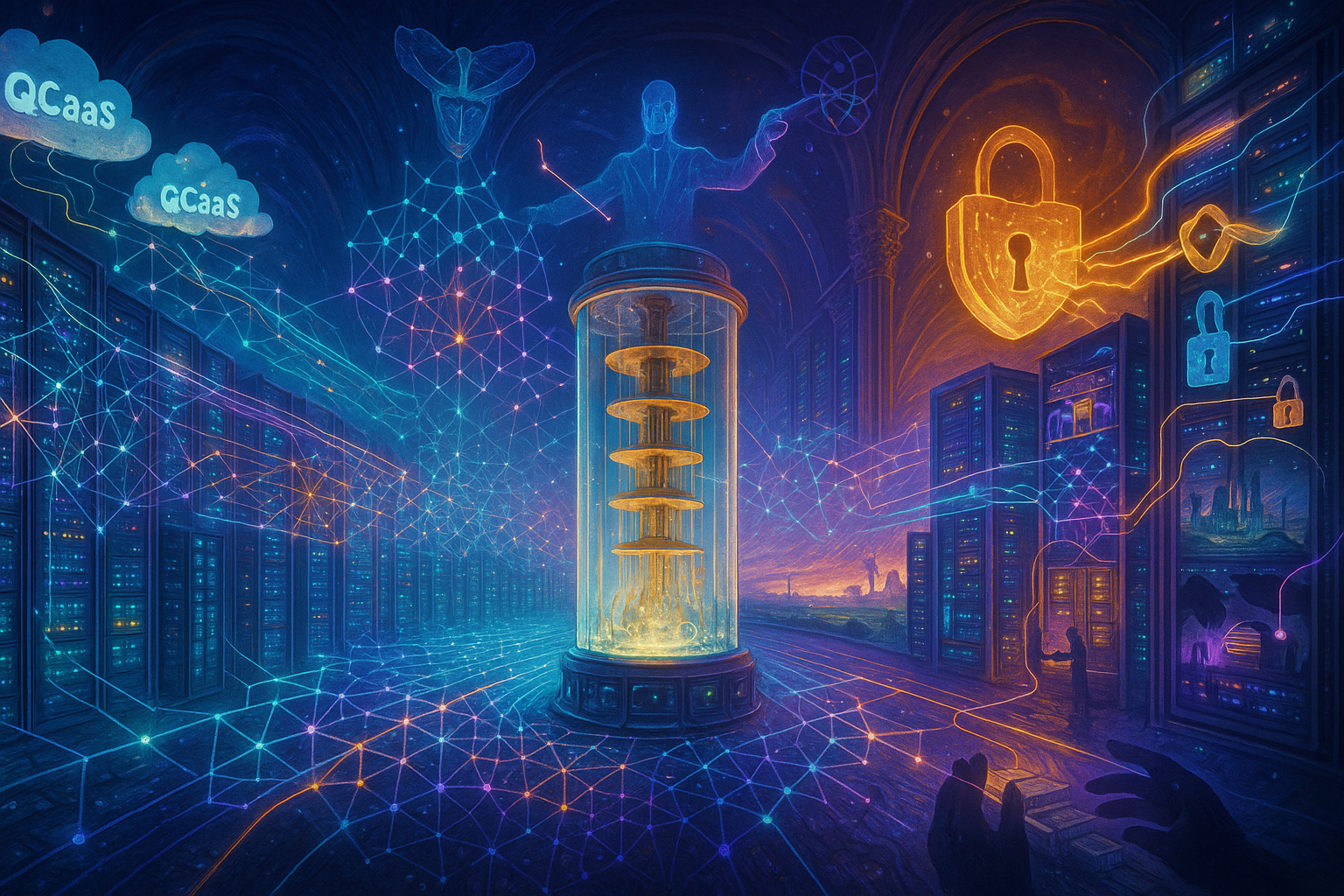


Quantum computing is poised to bring transformative changes to data centers, fundamentally altering their infrastructure, security protocols, and operational models. A primary impact stems from the highly specialized hardware requirements of quantum computers. Many quantum systems, such as those based on superconducting circuits, necessitate extremely cold environments, often near absolute zero, to maintain qubit stability and prevent decoherence from thermal energy or environmental interference. For instance, superconducting qubits are typically kept around 10 to 22 milli-Kelvin (approximately -460 degrees F) to remain in their initial ground state, which is crucial for accurate computation. This demand for ultra-low temperatures and minimal electromagnetic interference will require data centers to significantly redesign their cooling infrastructure, investing in advanced and energy-efficient cryogenic systems like dilution refrigerators. Such extreme conditions make traditional data center designs inadequate, posing substantial challenges for energy consumption and sustainability. However, breakthroughs like Xanadu's Aurora, which uses photonic technology, demonstrate the potential for room-temperature quantum computing, significantly streamlining future data center integration by eliminating extreme cooling demands.
To address the inherent scalability challenges of monolithic quantum architectures, the concept of Quantum Data Centers (QDCs) is emerging, leveraging distributed quantum computing by networking multiple smaller-scale quantum processors. QDCs are designed with principles of modularity, scalability, multi-tenancy, and any-to-any connectivity to support diverse quantum applications and potentially scale to millions of qubits. A pivotal element of QDC architecture is the quantum-enabled switch, which facilitates dynamic, circuit-switched quantum networks by connecting multiple quantum processing units (QPUs). These switches support diverse entanglement modes and feature ultra-low loss and expandable designs for shared resources like photon detectors. QDC network topologies can look to classical data center designs, such as switch-centric (Clos) or server-centric (BCube) models. An orchestrator is essential in a QDC to manage tasks like circuit partitioning and network scheduling, coordinating hardware and optical switches to establish end-to-end optical paths between communication qubits, ensuring optimal resource utilization and smooth workflow.
Beyond operational changes, quantum computing presents a critical threat to current data center security infrastructure. The predominant public key cryptography algorithms, such as RSA and Elliptic Curve Cryptography (ECC), are vulnerable to quantum attacks through Shor's algorithm. This creates an urgent concern for data centers managing long-term confidential information, as adversaries could employ "harvest now, decrypt later" strategies. To mitigate this, data centers must implement robust security measures, including post-quantum cryptography (PQC) and potentially Quantum Key Distribution (QKD). PQC relies on mathematical constructions resistant to both classical and quantum computers, with NIST standardizing lattice-based and hash-based algorithms. QKD, while leveraging quantum mechanical principles for key distribution, requires specialized hardware and optical channels and addresses only the key distribution aspect. The transition necessitates comprehensive cryptographic inventory assessment and cryptographic agility frameworks that allow for rapid updates and hybrid deployment approaches, combining traditional and post-quantum algorithms to ensure continuous security.
Despite significant theoretical promise, quantum computing technology is still considered immature for widespread practical applications, with some experts predicting 15 to 30 years until it is useful for real-world problems. However, major players like Microsoft, with their topological qubit processor Majorana 1, and initiatives such as Maryland's "$1 Billion Capital of Quantum" program, are accelerating development. SoftBank is also partnering with Quantinuum to integrate quantum processors into next-generation data centers, exploring commercial use cases like quantum chemistry and network analysis. The industry is moving towards Quantum Computing as a Service (QCaaS) to make the technology more accessible without requiring extensive in-house infrastructure. However, significant barriers to adoption remain, including high capital costs, undefined revenue models, hardware limitations such as error rates and scalability, software immaturity, and a critical shortage of skilled personnel in quantum mechanics and algorithms. Overcoming these economic and talent challenges will be crucial for quantum computing to redefine high-performance computing and achieve its projected economic value of up to $2 trillion by 2035.

Quantum Computing Advancements Leap Forward In Evolving Data Center and AI Landscape"
• "Quantum Computing And Its Potential Disruption To Data Centers - DataBank"
• "Quantum Refrigerator Keeps Qubits Cool - Physics (APS)"
• "Quantum-secure data centers: Preparing critical infrastructure for the post-quantum era - | World Journal of Advanced Research and Reviews"
• "Scaling millions of qubits: How Quantum Data Centers bring new possibilities for quantum computing - Outshift | Cisco"
• "The Rise of the Quantum Computing Industry – Identifying the key barriers of adoption of QC-technology as a service - DiVA portal"
• "Why do quantum computers need to work at temperatures near the absolute zero? - Reddit"
• "Why must quantum computers be kept near absolute zero?"